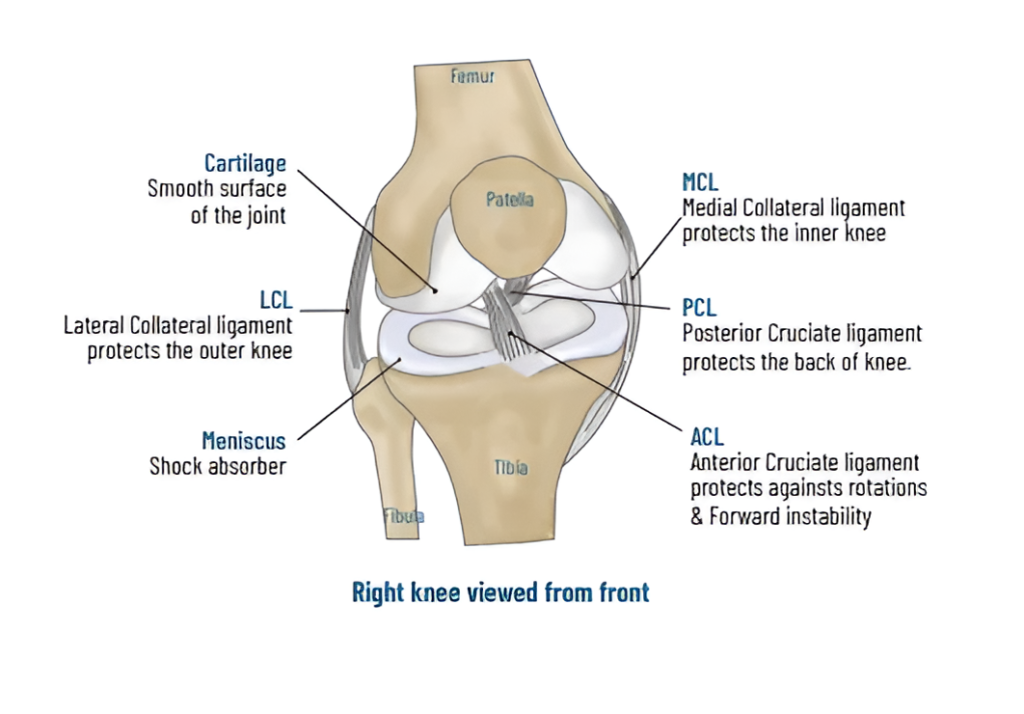



Knee Joint



The Knee Joint
Knee joint is formed by femur (thigh bone), tibia (leg bone) and patella (knee cap). The knee is a specialized hinge joint formed by flat surfaces and it is stabilized by multiple ligaments. The ligaments surround the knee and provide stability by limiting abnormal movements. Ligaments are torn in sports, two wheeler accidents and falls. Meniscus is C – shaped fibrocartilage disc, which deepens the flat surface of knee to provide stability and shock absorption. The inner (medial) and outer (lateral) compartment have one meniscus each. Meniscus tears lead to loss of shock absorption and can eventually to lead to joint wear (arthritis) In the front, the knee cap bone (patella) moves up and down over the lower end of
thigh bone forming the patellofemoral joint. The moving surfaces of the joint are covered by cartilage, which ensures frictionless movements for years.

